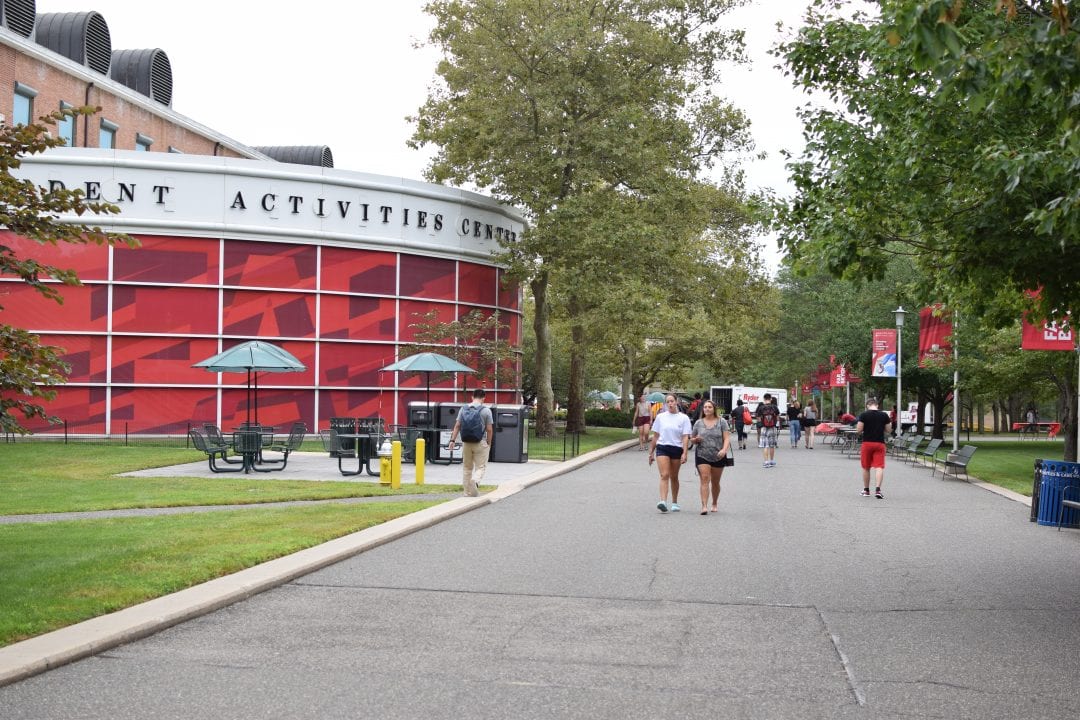
By Alex Kramer, Thomas Lotito and Alyssa Melillo
Campus Dining’s failure to freeze its raw fish properly may have put diners at risk for a parasite that causes diarrhea and vomiting, according to recent Suffolk County Department of Health Services inspection reports.
Raw fish must be kept frozen at -4 degrees Fahrenheit for seven days, or at -31 degrees Fahrenheit for 15 hours, to kill a parasite known as anisakis, or herring worm. Inspections were conducted at Jasmine and the Union Commons in October, West Side Dining in September and Roth Café last April.
The SCDOH found that salmon at Jasmine was stored in a freezer that could not maintain temperatures at -4 degrees Fahrenheit and the fish served there was not date-marked. Salmon was not adequately stored at Union Commons as well, nor was tilapia. The reports could not identify whether raw fish at Roth Café was frozen to destroy parasites before it was served.
When humans are infected with anisakis, the intestinal worms can grow up to two centimeters, which can cause diarrhea, nausea and vomiting. They stick to the walls of the esophagus, stomach or intestines, according to the Centers for Disease Control and Prevention website.
“The standard is meant to kill off parasite eggs that some fish carry,” Keith Schneider, a food safety expert at the University of Florida, said. “It makes it safe to eat the fish raw.”
Fewer than 10 people are diagnosed with herring worm in the United States each year, but many more cases may go undetected, according to the U.S. Food and Drug Administration’s website. It is most common in Japan, the Netherlands and Scandinavia. Surgery is needed to remove the worm in extreme cases.
Each restaurant on campus that serves sushi has a blast chiller—a high-powered refrigerator that can freeze raw fish to the recommended level—according to Todd Johnson, assistant executive director of the Faculty Student Association.
Joseph Rudolph, regional operations vice president for Lackmann Culinary Services, the contract holder for Campus Dining Services, suggested in an email through an FSA spokeswoman that Stony Brook had violated the safety requirements because “during the busy lunch periods, cooks are going in and out of those freezers which can cause the temperatures at certain times to fluctuate.”
Rudolph added that Campus Dining implemented the use of temperature logs for all salmon “so that each piece is individually tagged and logged as to when it was received and when it was kept frozen.” He did not say whether that requirement was in place before the violation.
A Campus Dining sanitarian is responsible for keeping the temperature logs and conducting monthly unit inspections, a spokeswoman said. An executive chef at West Side Dining is responsible for making sure the fish is frozen properly.
Five years ago, a Stony Brook student reported nausea after eating sushi at Jasmine that she described as “having an unusual taste,” according to a report by The Statesman.
Roger Tollefsen, president of the New York Seafood Council, said the FDA published standards for maintaining seafood safety 15 years ago. Suffolk County adopted the freezing requirements in 2003, according to spokeswoman for SCDOH Grace Kelly-McGovern.
“It takes a perfect storm of events for someone to be infected with these parasites,” Schneider noted. “The regulations are written for the worst-case scenario.”
Johnson said the violations were resolved in the months since these health inspections were conducted.
“Campus Dining reacted quickly to this issue by immediately discarding any food product that might be in question and revising their food handling procedures,” Johnson said in an email through an FSA spokeswoman.
He added the new food handling policies were approved by the county health department.
“The new food handling procedures, staff training and additional management support that were put in place this year provide Campus Dining with excellent tools that should help them implement and maintain the necessary food safety procedures needed at our dining facilities,” Johnson said.
Students interviewed on campus did not have much good to say about campus dining when showed the health inspection reports, although nobody complained of illness.
“Some of the food at Kelly is really dry and stale, it seems like it has been there since the morning,” freshman Daffeny Barochin said. “It’s insulting—you really want me to eat this?”
“For meal points, it’s not bad,” junior Sarah McNulty said after she finished eating her roll from Eastern Cuisine at West Side Dining. “I like this better than the SAC,” she said. “It just sits there in the containers at the SAC. It doesn’t look good.”
McNulty said she eats the sushi because she considers it healthier—it is not fried.
On a particular Friday, spicy tuna and tuna avocado rolls were nestled between sandwiches and wraps near the entrance to the SAC dining room. The shelves they were sitting on were labeled ‘Nutritionist Picks.’
Psychology major Melanie Rodriguez, also a junior, said she never eats the sushi on campus, but agrees that the variety of food is lacking.
“We’re on a college campus and they expect us to do well, but all of the fried food makes you feel sluggish,” Rodriguez said. “I personally do not eat the sushi on campus because, judging by all the other food here, I expect for it not to be fresh.”

















Crystal Hong • Apr 26, 2014 at 10:49 pm
I’ve noticed one of the fish, I forget which one, from Roth Cafe looked really weird and continue to stay that way for several weeks. As of now, they still seem to be like that. From what it’s labeled, I think it was salmon, there’s a certain color the fish should be, but there is one that has serious discoloration to the point where they look a pasty color and some have become dark brown. I went back several days to check if they threw it out or changed it but the weird colored raw fish remained. It’s possible that the fish was actually some other kind but not labeled but I felt the need to be wary. It was only recently that I began to see fresher tuna coming out and on display.